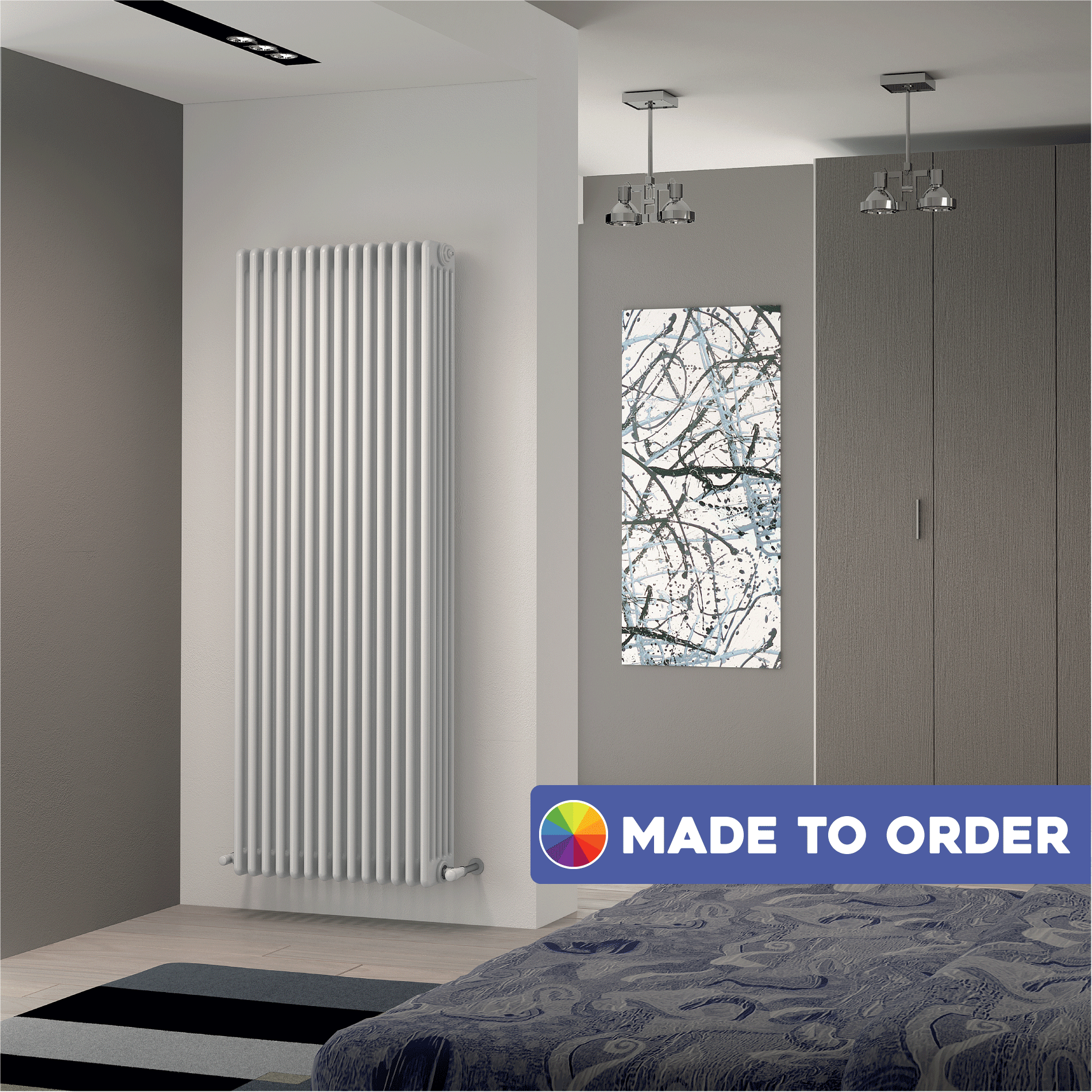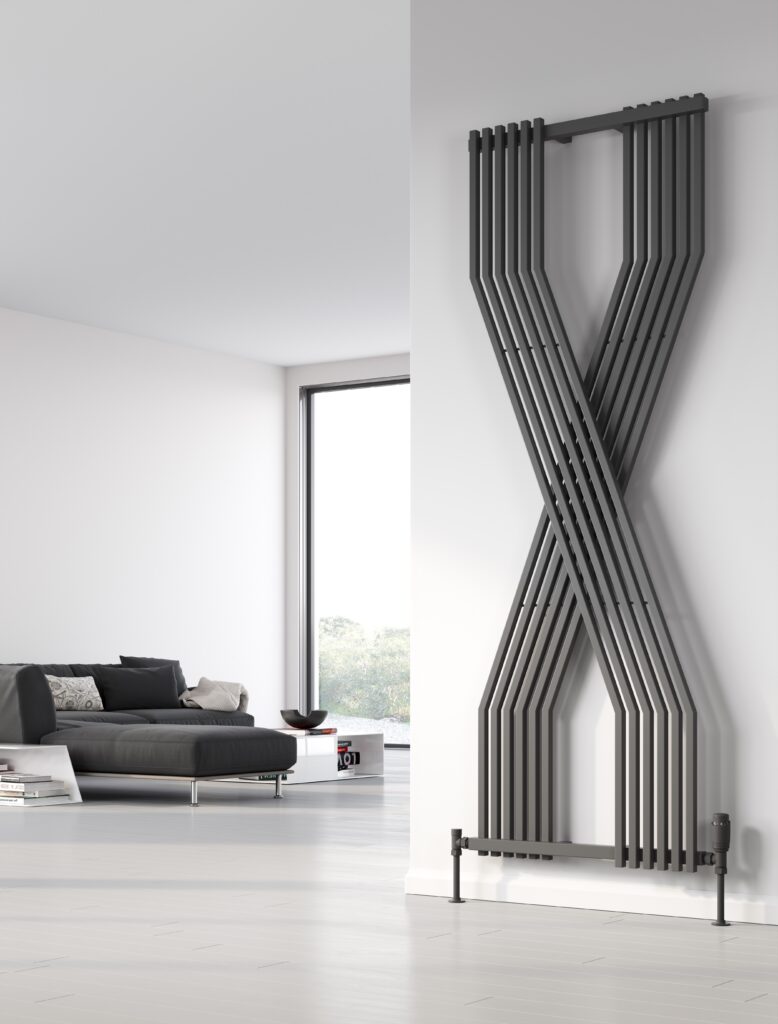The Complete Guide to The Best Vertical Radiators

With their space-saving, minimalist designs, vertical radiators are becoming increasingly popular choices for home heating. This in-depth guide will teach you everything you need to know about choosing the perfect vertical radiator.
What are the Benefits of Vertical Radiators?
There are several advantages to using vertical radiators:
- Take up less wall space – Their tall, slim shape means they have a smaller footprint than traditional horizontal radiators. This helps open up room layouts.
- Allow furniture positioning – Unlike bulky horizontal radiators, vertical models allow positioning furniture flush against walls without obstructing heat emission.
- Optimal convection heating – The vertical orientation enables rising warm air to circulate the room naturally due to convection. This provides consistent, even heating.
- Visually elongate spaces – Extending from floor to ceiling, vertical radiators trick the eye to make rooms appear taller and more spacious.
- Modern, contemporary aesthetics – Their minimalist designs and premium finishes like chrome complement modern, urban interiors.
- Efficient heating technology – Many new vertical radiators use innovative engineering to maximize energy efficiency and heating performance.
What are the Key Measurements?

Choosing the ideal size vertical radiator for your space comes down to two key dimensions – height and width:
Height
Vertical radiators come in a wide range of heights, usually from 400mm up to 2000mm:
- 400-600mm – Best suited for smaller rooms like bathrooms
- 800-1000mm – The standard height for most bedrooms and offices
- 1200-1500mm – Provides excellent heating in living rooms and large spaces
- 1800-2000mm – A dramatic floor-to-ceiling height for real visual impact
Measure the height of your wall to find a radiator in proportion to the room. Leave some space at the top (6-12 inches) and bottom (2-3 inches) for optimal heat circulation.
Width
Radiator widths generally range from ultra slim models at 80-150mm wide up to wider designs measuring 200-500mm:
- 80-150mm – Discreet narrow widths ideal for small bathrooms
- 150-250mm – The typical width for standard vertical radiator designs
- 300-500mm – Wider models have increased surface area and higher heat outputs
Match the width to your available wall space. Avoid going too narrow or wide for the area.
What are the Different Vertical Radiator Styles?
There are four main vertical radiator styles:
Flat Panel
The standard flat panel style consists of a simple flat upright rectangular shape. It offers an economical option for essential heating needs. Flat panels are available in a range of sizes.
Column Style
Column radiators feature multiple vertical columns, usually ranging from 2 columns up to 10 or more. The increased surface area enables greater heat emission without requiring more wall space. Column styles provide both form and function.
Double Panel
As the name suggests, double panel radiators contain two flat panel sections joined together by welded fins between them. This boosts the heat output within a slimmer overall width, making them perfect choices where wall space is limited.
Designer
Designer vertical radiators focus on aesthetics using high-end materials like aluminum, stainless steel or glass. They come in exotic shapes like curves and flourishes, premium finishes like polished chrome, and integrated valves to create a seamless modern look.
How do Materials Compare?
Vertical radiators are commonly constructed from metals with excellent heat conduction properties. Each material has its own characteristics:
Aluminum – An ultra lightweight metal valued for its excellent conductivity and corrosion resistance. Provides outstanding efficiency.
Mild Steel – A budget-friendly material but requires added coatings to protect from rusting. Prone to corrosion over time if unprotected.
Stainless Steel – Slightly heavier than aluminum but also very conductive and won’t corrode. Provides timeless, durable quality with its chrome sheen.
Cast Iron – Retains and radiates heat slowly thanks to its density. Ideal for period homes but very heavy. Can be painted colors.
Copper – Unparalleled heat conduction and naturally antimicrobial. Develops a unique patina over time. A luxury choice.
What are the Top Brands?
Quality and reliability matters when choosing a vertical radiator. Look for established UK brands like:
Stelrad – One of the most trusted and longstanding radiator brands in Britain. Offers excellent value across a wide range of vertical models. Their quality shows in the 10 year warranty.
Hudson Reed – Known for sophisticated designs from traditional to contemporary. Use premium quality materials like stainless steel and aluminium. Popular choice in modern homes.
Jaga – Belgian brand at the forefront of heating technology. Their vertical radiators boast impressive energy efficiency. Award-winning innovations.
Aestus – German engineered vertical radiators from a brand with 75+ years experience. Renowned for precision quality manufacturing and slim, understated designs.
Nordic Radiators – Scandinavian style and quality from a Danish brand. Focus on sleek, minimalist vertical radiators at reasonable prices.
What Size Vertical Radiator is Needed?
Choosing the correct BTU output is crucial for heating your space efficiently. Use this sizing guide:
- Small bathroom – 500-1000 BTUs
- Bedroom, home office – 800-1500 BTUs
- Medium to large living room – 1500-2500 BTUs
- Open concept living area – 2500-4000+ BTUs
- Large open space/warehouse – 4000+ BTUs
Look for models with outputs adjustable in small 50 BTU increments for truly customized heating.
Any Design Tips?
Follow these tips for an optimal look:
- Choose a radiator height in proportion to the room and wall size. Size too small appears dwarfed, while oversized looks overwhelming.
- Position below windows where possible – the upward convection of heat is enhanced.
- Allow some clearance around the radiator – 6-12 inches at the top and 2-3 inches at bottom – for air circulation.
- Pair with a programmable or smart thermostat for convenience and energy savings.
- For safety, use a radiator cover if installing in a nursery or child’s bedroom.
How is Installation Done?
Proper installation is critical for efficiency and safety:
- Carefully follow the manufacturer’s instructions for installing wall brackets and fixing to pipework. Use their recommended parts.
- Connect to concealed pipework where possible for seamless aesthetics.
- Minimize piping runs and avoid unnecessary elbows to reduce resistance. This maximizes flow rate.
- Perform a pressure test after connection to check for leaks. Fix any issues immediately.
- Bleed radiators and entire system after installation to remove air pockets. This allows water to flow freely.
For DIY, draining and refilling the system is required. Or hire a professional for installation.
What Maintenance is Required?
When installed correctly, vertical radiators require minimal ongoing maintenance:
- Keep the outside surface clean by gently wiping down with a soft cloth and mild detergent to remove any dust, dirt or stains.
- Immediately clean splatters before paint has time to dry and causes permanent marks.
- Touch up any scratches or chips in painted radiators as soon as noticed to prevent corrosion in those spots. Match the original color.
- To maximize performance, have a professional flush the radiator and heating system annually. This removes sediment, scale buildup and corrosion.
And there you have an extensive overview on choosing and caring for vertical radiators! Let me know if you need any clarification or have additional questions.
Take Action Now!
Explore our best-selling radiators in the UK and choose one that fits your budget and requirements. Don’t settle for a subpar heating system and upgrade your home or business with the best selling radiators today. Your comfort, energy bills, and the environment will thank you.
It is crucial to seek guidance from the manufacturer and a certified professional for the installation process to ensure safety and compliance with all technical specifications and requirements. Proper installation is key to the optimal performance and longevity of the product.
Additionally, professional installation may be necessary to maintain the product’s warranty. Therefore, it is highly recommended to consult with experts and not attempt to install the product yourself unless you are qualified to do so.



